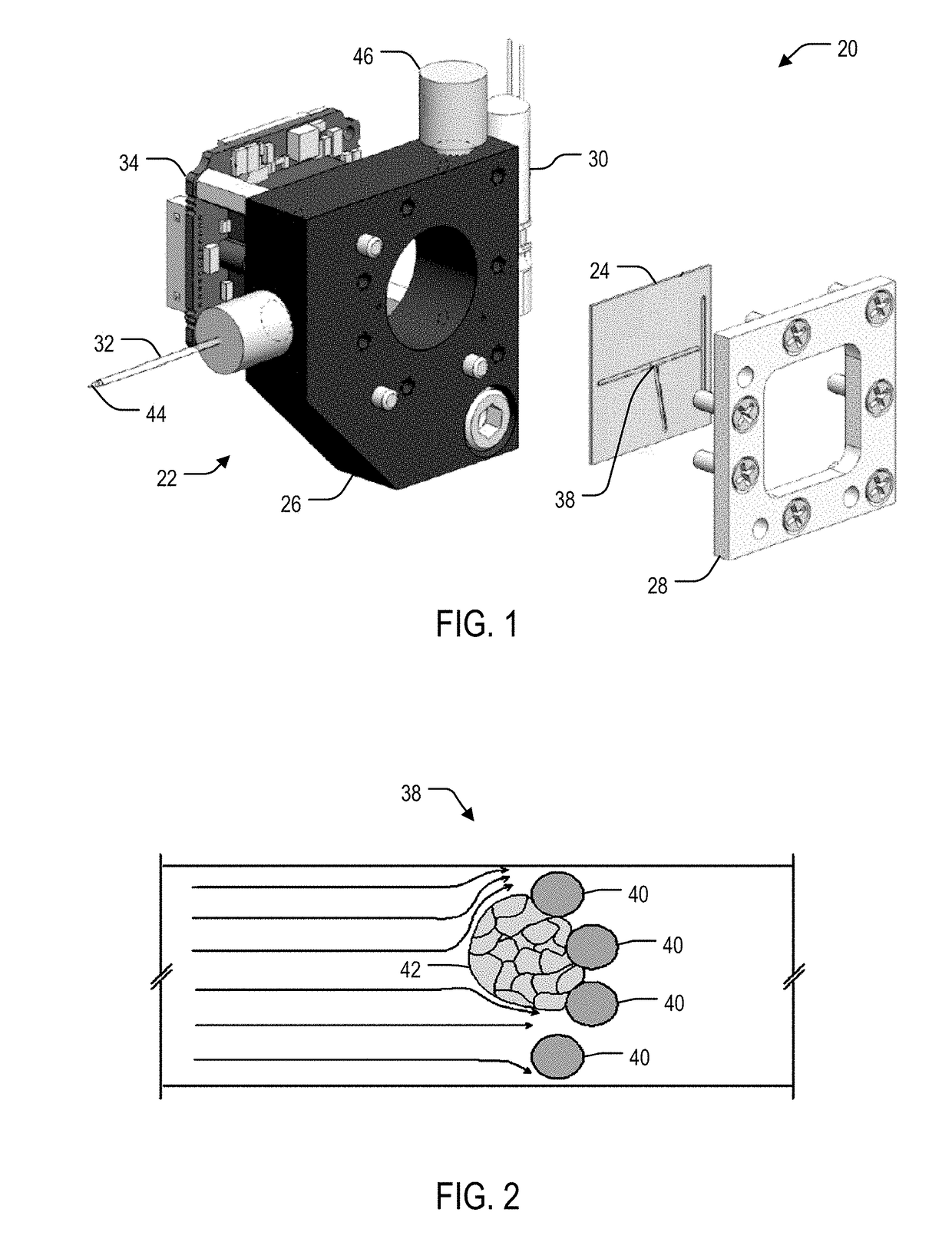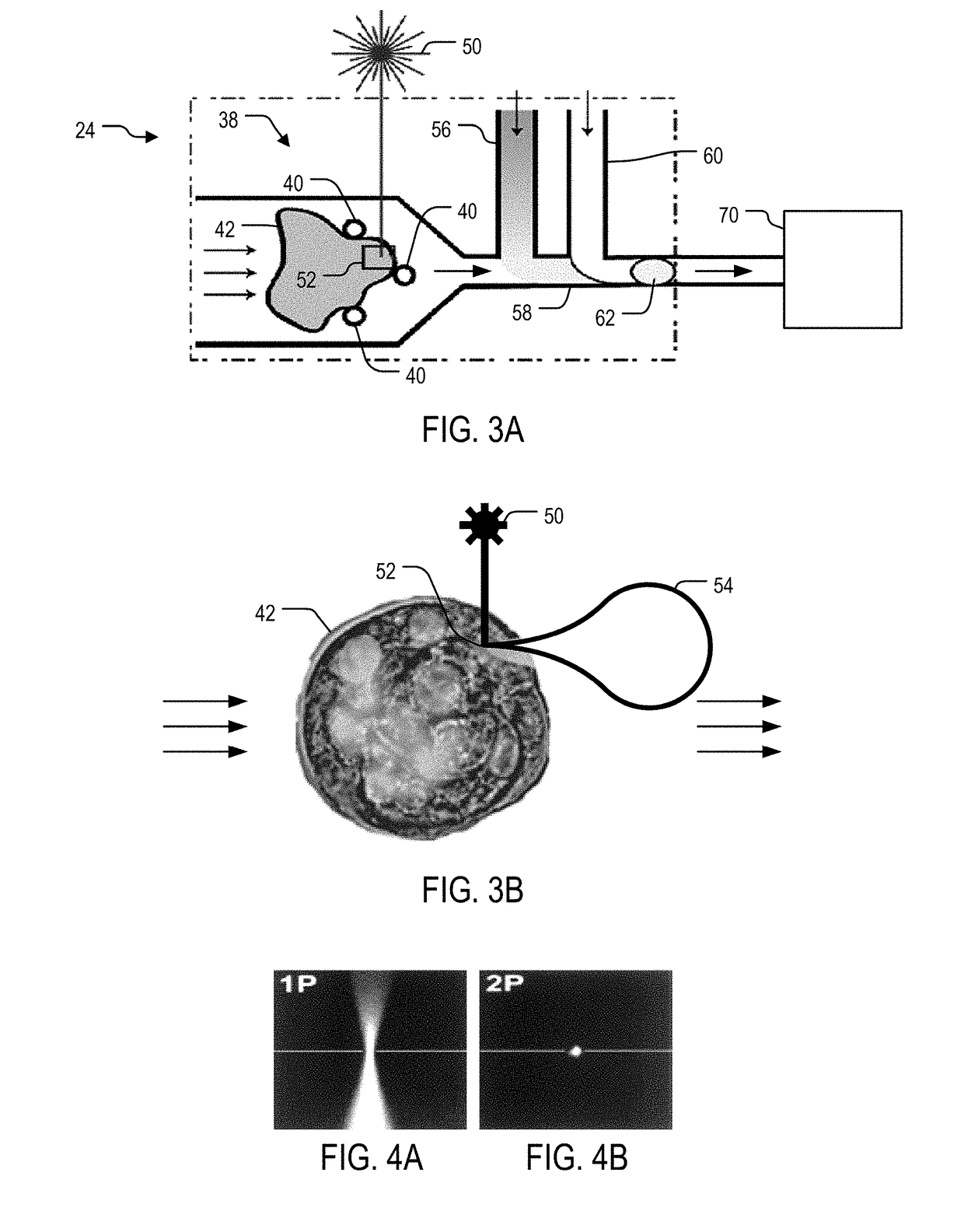System and method for laser lysis
a laser lysis and laser lysis technology, applied in the field of cell analysis techniques, can solve the problems of difficult analysis of individual live cells, inability to capture lysate from individual cells in situ, and obscure valuable biological states
- Summary
- Abstract
- Description
- Claims
- Application Information
AI Technical Summary
Benefits of technology
Problems solved by technology
Method used
Image
Examples
examples
[0074]For optimization of SQUIRT-PCR, two-photon (2P) laser lysis was demonstrated to effectively lyse individual cells with sub-cellular resolution in a cluster without incurring visible damage to the neighboring cells. Various laser settings were tested to achieve sufficient lysis performance and mRNA harvest efficiency. Laser settings and optical configurations found to yield efficient lysis included 100×1.3 NA oil-immersion objective lens, fundamental laser wavelength of 800 nm with a pulse duration of 150-200 fs, 250 kHz repetition rate, 0.4 μJ pulse energy, and ˜1 s total exposure time. Moreover, targeting the nuclear membrane was discovered to easily generate micrometer-scale intracellular cavitation bubbles (Quinto-Su P A, et al. 2008, Lab Chip 8: 408-414; Li H, Sims C E, et al. 2001, Anal Chem 73: 4625-4631), which cause ruptures in the cell plasma membrane and the release of cell contents from the cell. Cavitation bubbles only existed for ˜100 ms then dissipated. The 2P ex...
PUM
| Property | Measurement | Unit |
|---|---|---|
| temperature | aaaaa | aaaaa |
| temperature | aaaaa | aaaaa |
| temperature | aaaaa | aaaaa |
Abstract
Description
Claims
Application Information
 Login to View More
Login to View More - R&D
- Intellectual Property
- Life Sciences
- Materials
- Tech Scout
- Unparalleled Data Quality
- Higher Quality Content
- 60% Fewer Hallucinations
Browse by: Latest US Patents, China's latest patents, Technical Efficacy Thesaurus, Application Domain, Technology Topic, Popular Technical Reports.
© 2025 PatSnap. All rights reserved.Legal|Privacy policy|Modern Slavery Act Transparency Statement|Sitemap|About US| Contact US: help@patsnap.com



